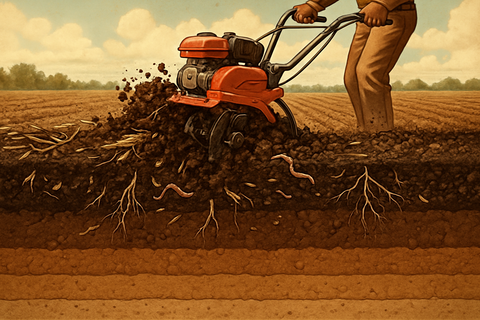Minimal soil disturbance is a cornerstone of regenerative gardening because it helps maintain and enhance the natural structure, biology, and function of the soil. By limiting digging, machinery use, and synthetic chemicals, we preserve vital soil life and foster a healthy environment for plants to thrive. This approach hinges on respecting the intricate layers of soil—O, A, B, and C horizons—each serving unique functions, and allowing the soil's natural aeration and water retention systems to flourish.
Regenerative gardening isn't just a trend; it's a profound shift in how we interact with the earth. At its heart lies the principle of minimal soil disturbance. But why is it so crucial? It all boils down to two interdependent categories: Soil Structure and Soil Life.





